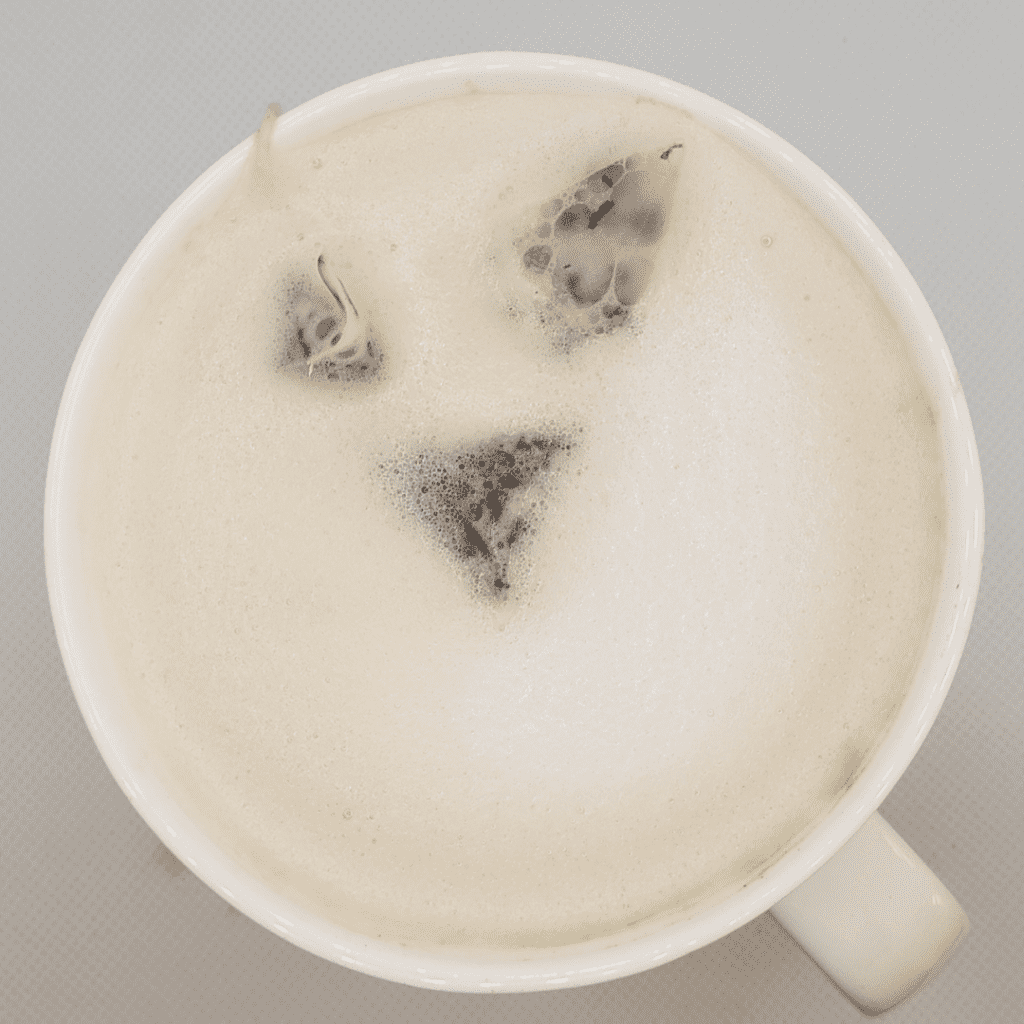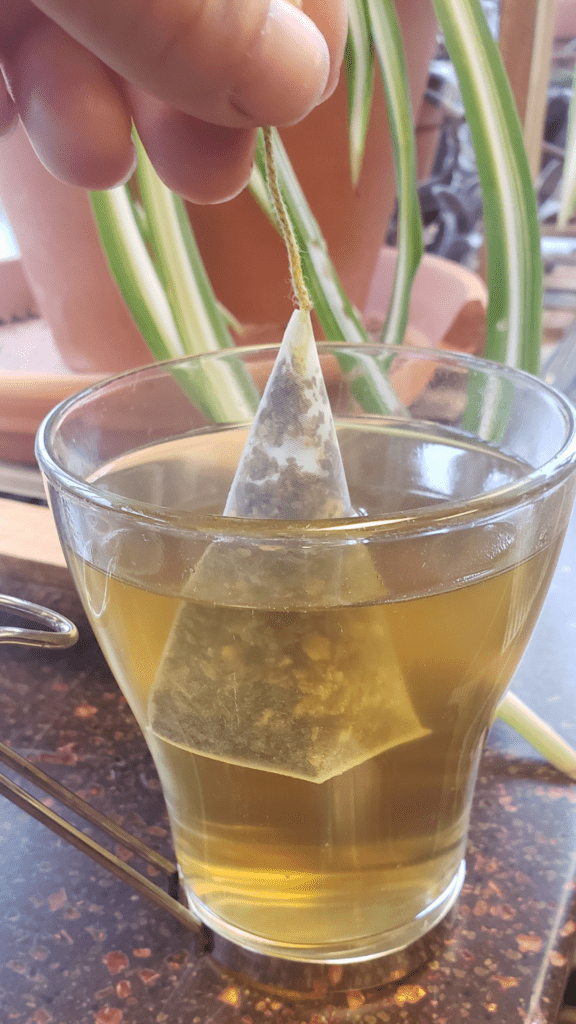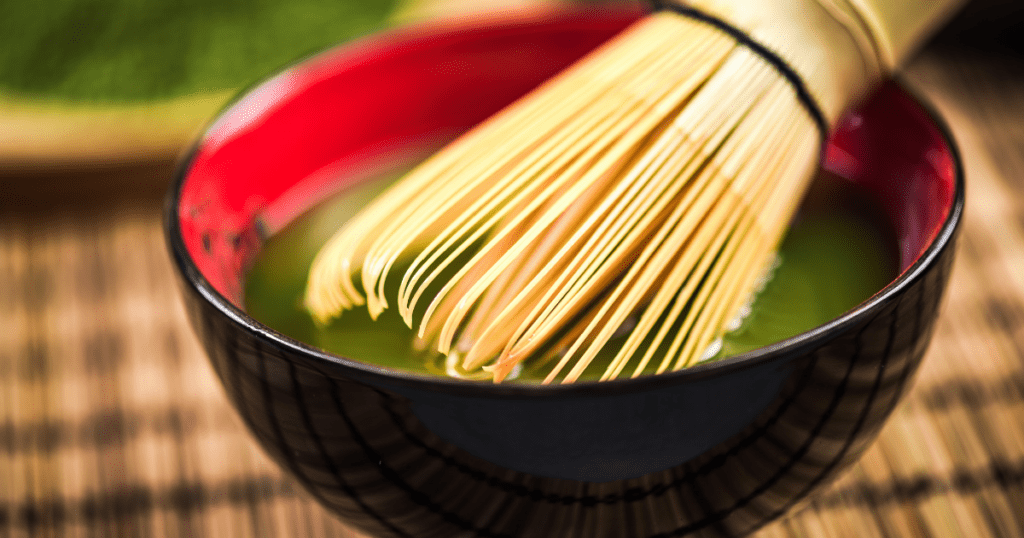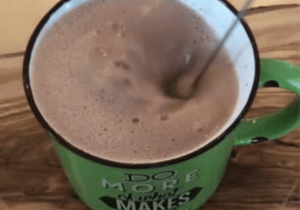Stress relief & tea – Calming tea rituals from morning to night
Managing stress is a challenge. We have responsibilities, things to remember, and often with a sense of urgency. Many of these are real things that we do have to face and address. Without support tools, rest and recovery, we get locked into a heightened state and feel that sense of urgency constantly. We get overwhelmed and it becomes difficult to focus. What to do? One easy idea is to start a tea ritual.
How does tea relieve stress
As a barista, health coach, and yogi, I find that creating restful moments throughout the day is a highly valuable practice for a healthy relationship with stress. Small rituals built in throughout the day give us opportunities to practice mindfulness and empty the garbage can of the mind before it overflows.
Short and sweet tea rituals for yourself can be an impactful calming practice because:
- It’s uncomplicated, only requiring tea, hot water, and a mug.
- Herbs and teas are traditionally used for health benefits and relaxing effects.
- With so many varieties and blends, every person is likely to find something they enjoy.
4 Things to know about Tea
- Tea blends come with and without caffeine. Caffeine has a half life of about 5-6 hours, meaning it can stay in the system all day. If you’re a caffeine consumer, morning is the time for it!
- Many herbs do not have much research to point to their safety and efficacy, and a few that do may have contraindications and side effects. If you have health issues to monitor, check before trying a new herb.
- For your tea breaks, use a cup that is comfortable to hold and drink from.
- Different times of day call for different energy supports.
Here are some ideas for mini tea rituals to calm and center yourself throughout the day!
MORNING - Rise and Shine
To get some sustainable energy going first thing, try these:
Green tea is associated with a range of health benefits. With roughly a quarter of the caffeine you’d get from a cup of coffee, it’s a good option for the caffeine-sensitive.
Yerba Mate comes from the leaves of a tree native to South America. It has less caffeine than coffee, but more than black tea. It has a similar flavor to tea, but it is a popular alternative.
Matcha is made from specially grown, high grade green tea leaves ground into a fine powder. It has a strong flavor and about twice as much caffeine as green tea.
Herbs and flavors for morning momentum are ginseng, ginger, dandelion, rosemary, or lemongrass.
Morning Energy Tea Ritual



AFTERNOON - Pick Up
Midday slump? Try these:
White tea has the lowest caffeine content of the main types of tea, and has a light flavor. Brighten your cup with mint, ginseng, citrus, or berry flavors.
White or decaf Earl Grey latte - Earl Grey is a blend of tea and bergamot, and there are blends made with decaf black tea or white tea. An afternoon pick me up is a good time to have a little milk and sweet flavor like lavender, honey, or vanilla for some extra sustenance.

Midday Revitalizing Tea Ritual






*As a barista, I must recommend that you brew the tea and whisk milk separately. Here, the goal is practicality and prioritizing the act of sweetening the milk. If you have 2 cups, by all means brew the tea in one and whisk the milk in the other.
AFTERNOON - Centering
On particularly high stimulus days, we can get into a high alert state and could use a moment to center and settle our nerves.
Rooibos - Rooibos, or “red tea”, is naturally caffeine free and has lower tannin levels, making it a good option for those who don’t care for the taste of tea. It is great blended with warm flavors like cinnamon, orange, and vanilla
Chai - Chai is actually the word for “tea” in many areas of the world, though it commonly refers to masala chai, or spiced tea with milk. You can find a variety of masala chai-inspired flavors in rooibos and decaf blends. A cup of sweet, spicy, creamy chai is a special comfort and sure to hold your attention for at least a couple of minutes!
Afternoon Centering Tea Ritual
5 minutes spent centering and clearing the mind is a better use of your time than clambering through tasks feeling scattered and anxious.





EVENING - Wind Down
An evening wind down ritual can be very beneficial to begin cueing the body when it’s time to settle down for the day. Whether the day was stressful, unproductive, or satisfying, take a few moments to let it go. I recommend sticking with herbal blends that have been recommended as safe for daily use.
Herbal tea refers to any naturally caffeine-free herbs and botanicals that can be steeped in hot water and sipped.
Herbs commonly used for bedtime are chamomile, valerian, ashwaganda, passionflower, rose hips, and lemon balm. Many of these, especially valerian, are often used to help with sleep and may have sedative effects. The amounts found in commercially available tea blends are probably low, but be aware of your personal sensitivities and frequency of use.
Evening Wind Down Tea Ritual
🍵 Clear a spot where you’d like to sit and enjoy your tea.
🍵 Brew in a mug that is comfortable to hold and drink from. Dress comfortably and be almost all the way ready for sleep, so there is little left requiring action from you.
🍵 Take the tea to your spot and for the entirety of the cup, breath deeply and slowly.
🍵 Notice the flavors and feeling with each sip.
🍵 Think of 3 things from the day you appreciated or were satisfied with. If thoughts besides those pop up, don’t stay with them. No need to dwell on anything at this time, simply offer a sense of gratitude for yourself and moments of your day and cultivate a sense of peace for the mind.
SLEEP INTERVENTION
Some days all the deep breathing and calming rituals in the world couldn’t settle us down for sleep. On these days, you may look into a “stronger” tea traditionally used for sleep. If you try an herbal blend with kava, or melatonin, etc, I recommend having a small amount on a night you know you are able to sleep deeply and even sleep in, until you know how your body will react to the herb. Even with store bought teas, it’s good practice to be cautious with any new supplement.
Kava is a plant extract used for deep relaxation and may be considered as a depressant. It is also found in many tea blends. You may find it very helpful when sleep is difficult, but do some reading before trying it out!
Melatonin is a supplement that can have side effects, but is also often found in sleep teas. It is generally considered safe, but may not be appropriate for everyone everyday.
If you’re sensitive to the effects of stronger supplements, your favorite herbal tea might do the trick. If you’ve used it before, you may have a conditioned response!

Sleepytime Tea Ritual
☕ Be as ready for sleep as possible, knowing some things may be left undone but can wait.
☕ Set up an environment that feels comforting and safe. Light a candle or set a diffuser with a mild scent like lavender, or no scent at all. Listen to meditative music or a guided meditation. (Practicing sitting in silence is valuable, but sometimes giving the mind something else to focus on can help keep invasive, stressful thoughts away long enough for the body to settle to sleep.)
☕ Keep any electronic/screen lights out of view and on “do not disturb”.
☕ Prepare your tea, and sip as you sit in your space.
☕ If you lit a candle, extinguish it before you lay down.
Modern life stress and stimulus is high, and we could use more options to take control of our own health. Creating mini rituals and sipping tea is a simple and accessible way to add more restful moments to each day, and maybe get some hydration and added health benefits while we’re at it!
Sarah Gardocki wants to be your gym guide and fitness friend. As a personal trainer and health educator who has been working to support pre- and postnatal women since 2005, she loves to create comfortable spaces and connect folks to the resources that best support their own personal goals. Find other articles written by Sarah on her coach profile. Let Sarah help you experience how confidence in the gym can impact all areas of your life!







